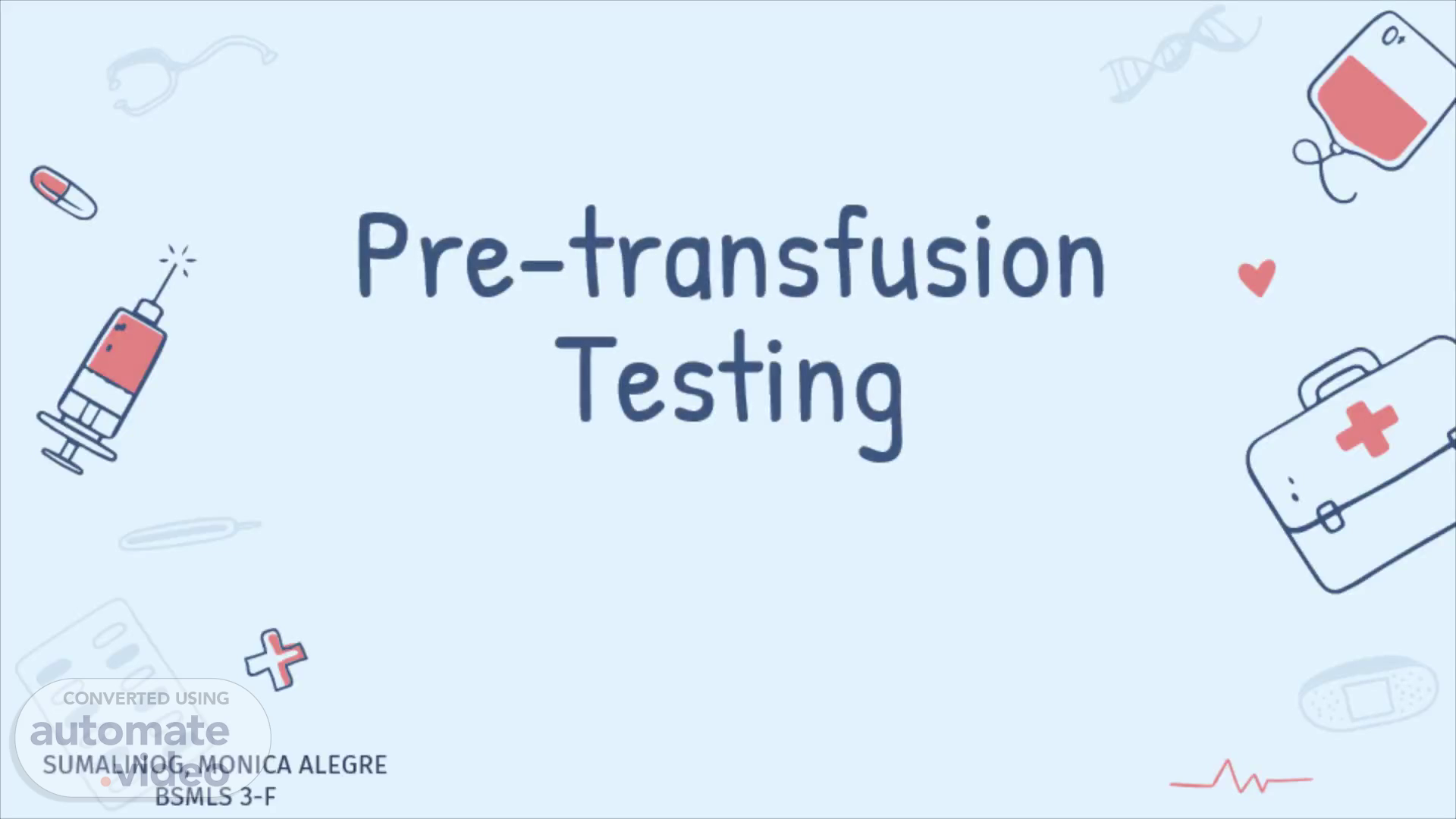
Page 1 (0s)
Pre-transfusion Testing. “CAUSES OF POSITIVE RESULTS IN THE SEROLOGIC CROSS-MATCH”.
Page 2 (20s)
What is Pre-transfusion Test?. Pre-transfusion tests include ABO and RhD type of the patient's red blood cells, as well as an antibody screen with the patient's plasma. The latter is a strategy for detecting clinically significant non-ABO antibodies to red cell antigens. The single most critical test done on pre-transfusion samples is ABO grouping, and the sensitivity and security of testing equipment must never be compromised. Pre-transfusion testing can ensure ABO compatibility between donor and recipient blood as well as discover the majority of clinically important RBC alloantibodies that react with donor RBC antigens..
Page 3 (1m 18s)
Table of Contents. Cross-matching. 01. Functions of Cross-match.
Page 4 (1m 34s)
What is cross-matching?. abstract. Cross-matching is the essential method responsible for safe blood transfusion and is one of the most significant serological procedures relevant to blood group serology..
Page 5 (2m 22s)
What is cross-matching?. A cross match test is performed to guarantee that there are no antibodies in the patients' serum that will react with donor cells when they are transfused..
Page 6 (2m 42s)
Functions of Cross-Match. It is the last step in determining ABO compatibility between the donor and the patient..
Page 7 (3m 8s)
Functions of Cross-Match. In order to avoid a hemolytic transfusion response..
Page 8 (3m 23s)
Cross-match Procedures. MAJOR CROSS-MATCH MINOR CROSS MATCH.
Page 9 (3m 47s)
Principle of Cross-Match. M ajor cross-match is done to detech any serologic incompatibility b/w donor’s cells and patients serum..
Page 10 (4m 13s)
Cross-Match Techniques. Immediate Spin Method. Saline R oo m Temperature.
Page 11 (4m 27s)
Causes of Positive Results in Serologic Cross-Match.
Page 12 (5m 8s)
Conclusion. Prior to the administration of blood or blood products, a crossmatch is performed (e.g. packed red blood cells). The crossmatch is used to determine the existence of antibodies in the recipient against the donor's red blood cells. After transfusion, these antibodies bind to the donor's red blood cells..
Page 13 (5m 50s)
Thanks!.